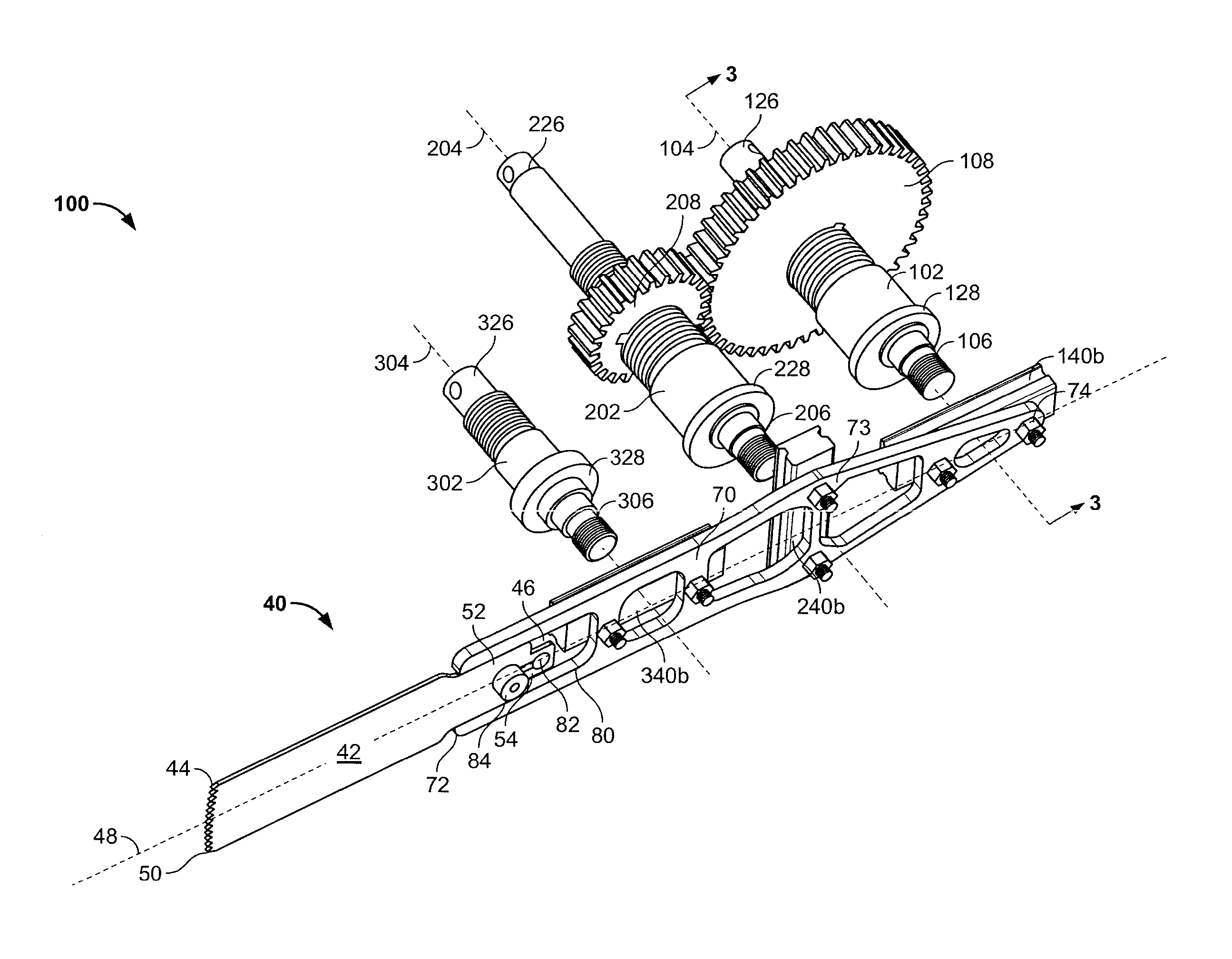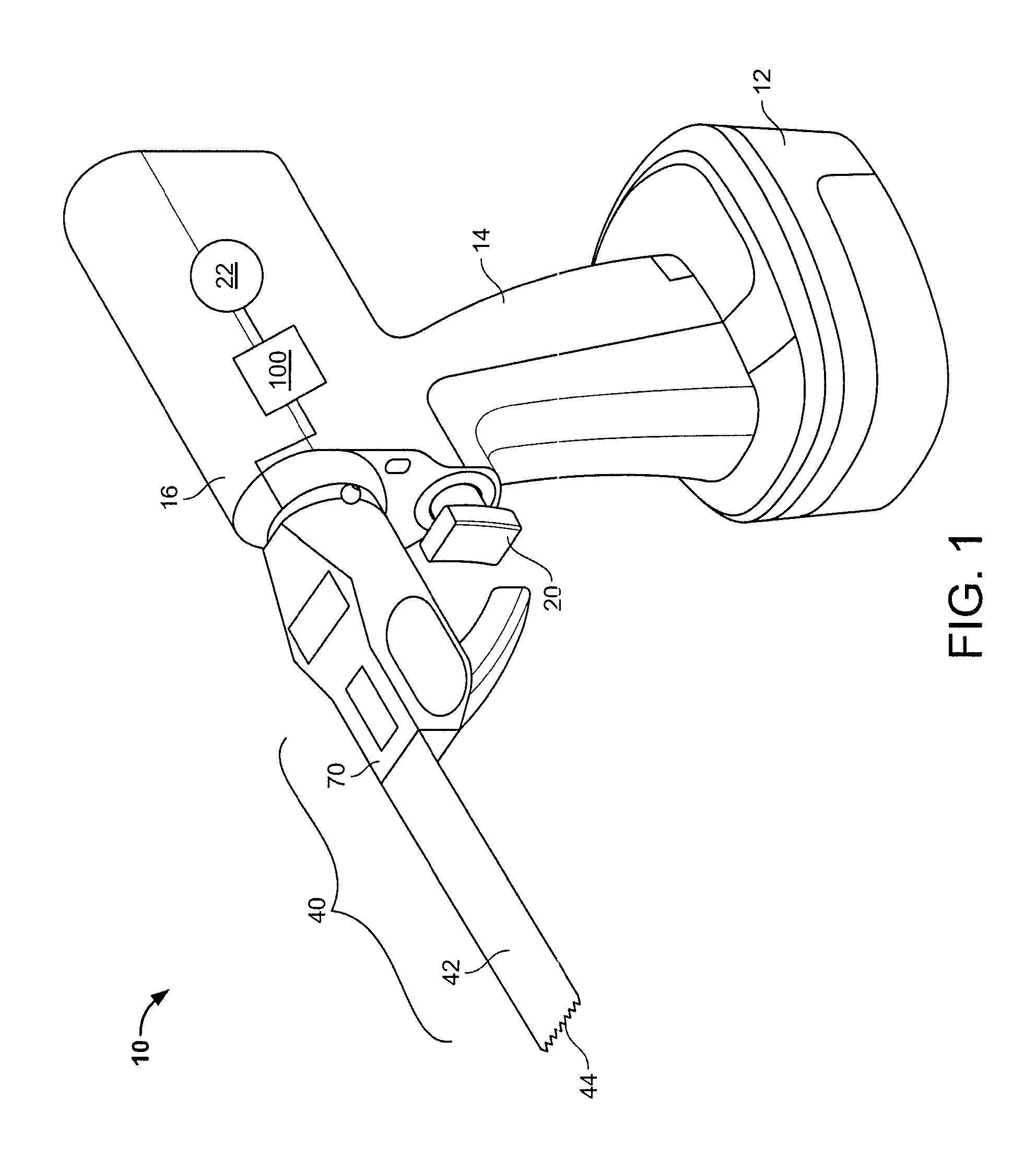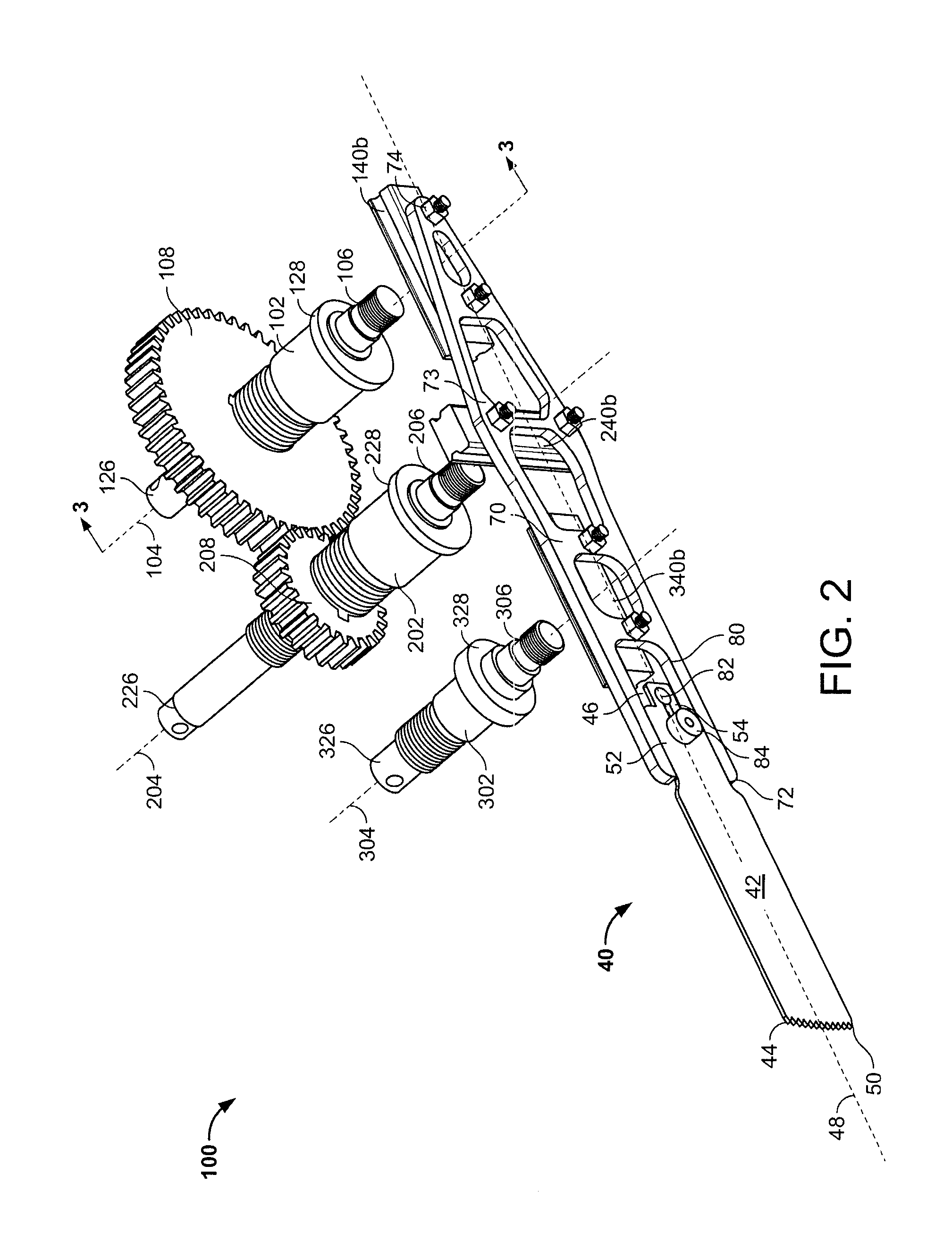Sagittal saw
a sagittal saw and saw blade technology, applied in the direction of surgical saws, etc., can solve the problems of undesirable damage to bone cells, affecting the cutting rate of sagittal saws, and generating a significant amount of heat in the immediate vicinity, so as to increase the cutting rate, reduce the overall cutting time, and increase the cutting rate
- Summary
- Abstract
- Description
- Claims
- Application Information
AI Technical Summary
Benefits of technology
Problems solved by technology
Method used
Image
Examples
Embodiment Construction
[0024]Referring now to FIGS. 1-4, the sagittal saw 10 is a hand-held device that includes a motor housing 16 and a handle 14 extending from an end of the housing 16. In this embodiment, a battery pack 12 is detachably secured to an end of the handle 14 and serves as a power source for a motor 22 disposed within the housing 16. A gear assembly 100 is also disposed within the housing 16 and connects the motor 22 to a blade assembly 40. The gear assembly 100 is driven by the motor 22, and in turn drives the blade assembly 40 in such a way as to increase cutting speed and reduce heat generation by the saw 10 as compared to some conventional sagittal saws. As discussed further below, a cutting edge 44 of a saw blade 42 is driven by the gear assembly 100 along a planar cyclic path that is generally in the form of a figure-eight, or, in other words, a closed planar loop curve consisting of two lobes meeting at a node. The lobes may be symmetric or asymmetric.
[0025]The cyclic figure-eight m...
PUM
 Login to View More
Login to View More Abstract
Description
Claims
Application Information
 Login to View More
Login to View More - R&D
- Intellectual Property
- Life Sciences
- Materials
- Tech Scout
- Unparalleled Data Quality
- Higher Quality Content
- 60% Fewer Hallucinations
Browse by: Latest US Patents, China's latest patents, Technical Efficacy Thesaurus, Application Domain, Technology Topic, Popular Technical Reports.
© 2025 PatSnap. All rights reserved.Legal|Privacy policy|Modern Slavery Act Transparency Statement|Sitemap|About US| Contact US: help@patsnap.com



